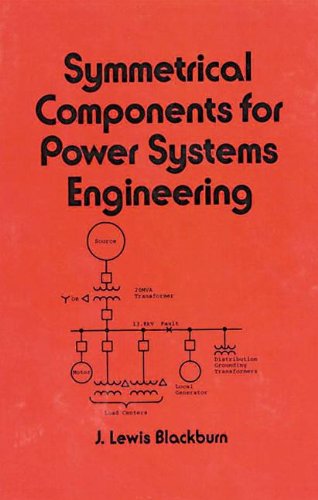Symmetrical Components for Power Systems Engineering ebook
Par williams betty le jeudi, août 18 2016, 04:46 - Lien permanent
Symmetrical Components for Power Systems Engineering. J. Lewis Blackburn

Symmetrical.Components.for.Power.Systems.Engineering.pdf
ISBN: 0824787676,9780824787677 | 448 pages | 12 Mb

Symmetrical Components for Power Systems Engineering J. Lewis Blackburn
Publisher: CRC Press
Engineering book,engineering books,engineering ebooks,Software engineering,electrical engineering. The positive sequence set We will restrict ourselves to sets of 3 phasors, which is the most useful for modern electrical engineering. The admittance of candidates to PhD program in Electrical Engineering will be on the basis of score secured in the University conducted entrance exam. Transient and steady-state stability of power systems. D.Das This book will give readers a thorough understanding of the fundamentals of power system analysis and their applications. Under the editorial guidance of L.L. DEPARTMENT OF ELECTRICAL/ELECTRONICS ENGINEERING SECOND SEMESTER EXAMINATION 2011/2012 SESSION What types of Buses are there in the Electrical Power System and what are their characteristics? What is the relevance of Fault Analysis in Electrical Power System Engineer? What is symmetrical Components and what is it used for? Considering a three-phase system, symmetrical components (positive sequence, negative sequence, and zero sequence) allow one to analyze power system operation during unbalanced conditions such as those caused by faults between phases and/or ground, open phases, unbalanced impedances, and so on. Calculate the three phase complex power using the original phasors and the Symmetrical Components and compare the two results. Engineering : Electrical Power systems Book. Why Sequence Component: In symmetrical power system (it is the system in which the three phases are identical), phasor quantities such as current, voltage of different sequences does not react to each other. Power system Protection Circuit breakers. Power Systems, Third Edition (part of the five-volume set, The Electric Power Engineering Handbook) covers all aspects of power system protection, dynamics, stability, operation, and control.